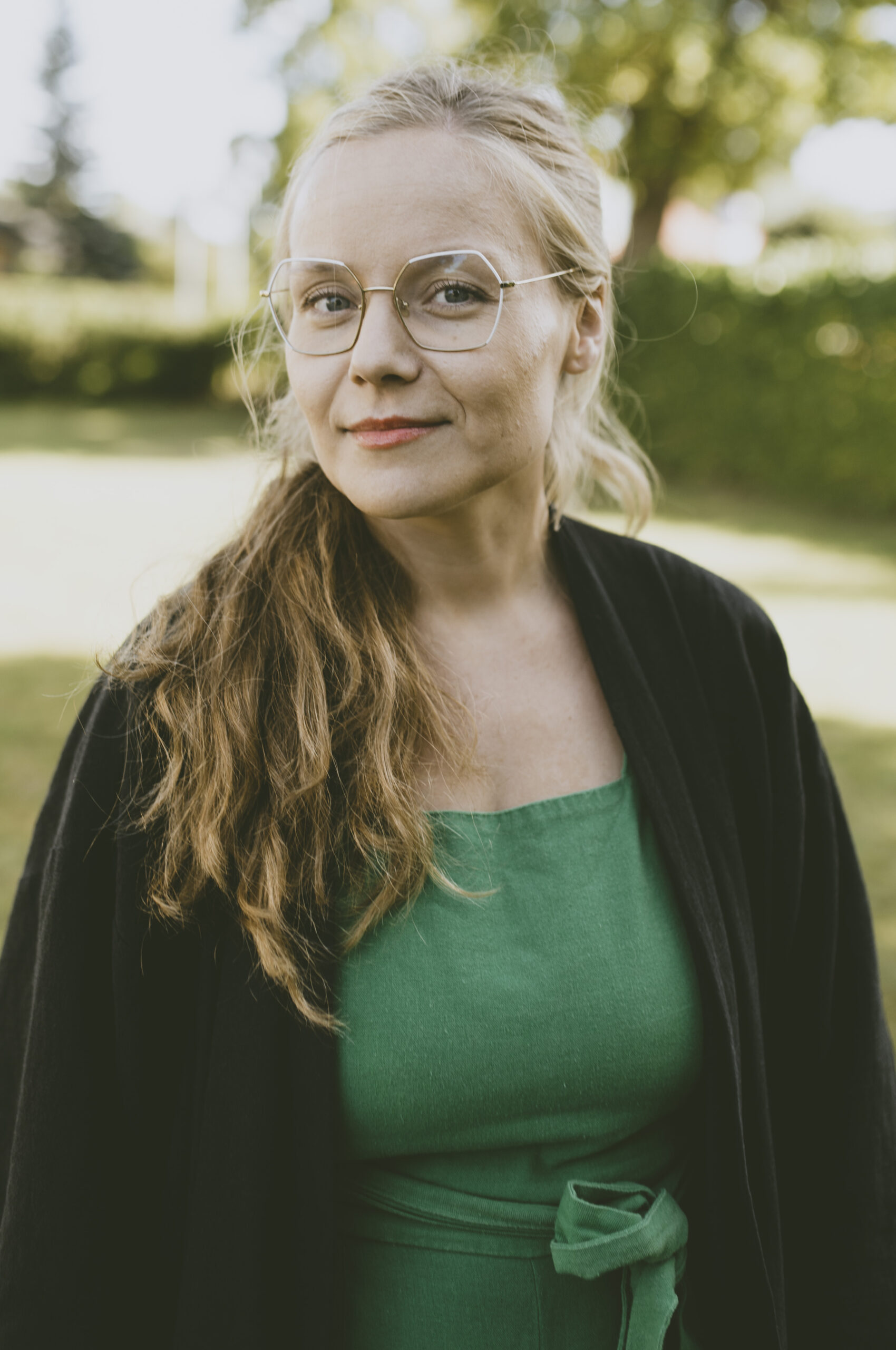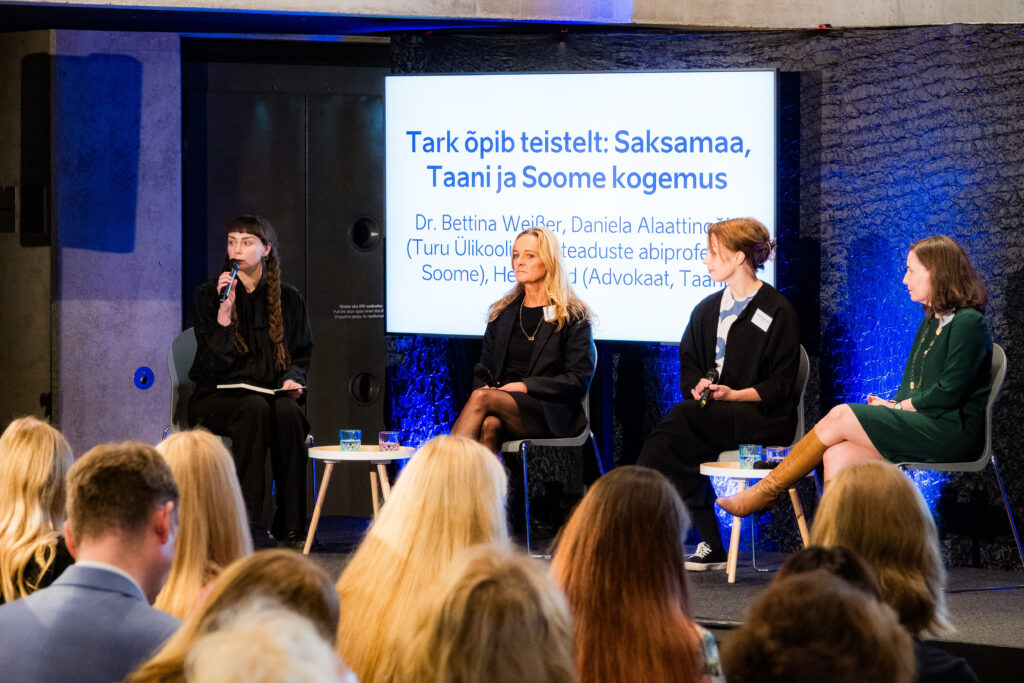Helle Hald: In Denmark, rape victims must have the support of a lawyer from the very beginning.
Helle Hald, an attorney with over 25 years of experience and spokeswoman for the national organisation Hjælp Voldsofre (Help Victims of Violence), is a passionate advocate for the right of every individual to be treated with dignity. Drawing on both her personal insights and Denmark’s experience, she highlights the transformative impact of adopting consent laws on the experiences of sexual violence survivors.
For nearly three decades, Hald has represented victims in court, including survivors of sexual violence. Since starting her practice in 1993, she has dedicated much of her career to improving the judicial system’s treatment of victims.
Reflecting on societal attitudes prevalent during her early years as a victims’ advocate, Hald recounts the damaging stereotypes survivors often faced. Remarks such as, “It’s probably your own fault,” “You were probably flirting,” or “If you went to that bar, you should have known what he wanted,” were distressingly common. Even more insidious were comments like, “Your mouth says no, but your eyes say yes,” which trivialised and undermined victims’ experiences.
Hald has made it her mission to challenge and dismantle these harmful myths. “It’s about a human’s fundamental right to integrity,” she asserts. “Everyone has the right to decide who touches their body or penetrates their body. And we have to protect that right.”
Through her tireless advocacy, Hald continues to champion the dignity and autonomy of survivors, striving to ensure they receive justice and respect in the judicial process.
Hald explains that while the journey towards a consent-based law was lengthy, momentum began to build less than ten years ago, coinciding with Denmark’s ratification of the Istanbul Convention. The question of better protecting victims resurfaced as a pressing issue.
“And then it started. There were a few front fighters, especially Amnesty International, who got organised and campaigned for changing the law so that rape would be interpreted based on consent in the Criminal Code,” she says.
Hald recalls numerous debates, hearings, and conferences during the process. However, the movement faced significant obstacles, including persistent myths. One key challenge was the tendency to frame rape solely as a women’s issue.
“Of course, most victims of rape are women, but there are a lot of boys and men who are victims of rape—usually by other men. We really wanted it to be a universal human right!” she emphasises.
Attitudes have shifted
Hald has observed a significant shift in attitudes toward victims since she began her work. “If a girl goes to a police station and says her right to say no has been violated, that someone penetrated her without her consent, they should listen and assume she’s telling the truth,” she says.
However, this wasn’t always the case. “At one point in Denmark, the police often assumed it was probably her own fault or thought she was just angry at the guy because he didn’t want to see her anymore. There was a lot of prejudice—not just from the police but also from ordinary people in Denmark.”
Today, Hald notes a marked improvement in the police’s approach. “Instead of thinking, I wonder if this is true, they now think, Oh my God, if this is true, it’s a rape. They are more open, they’re listening, and they treat the victim with greater respect,” she explains.
Hald recalls a case from years ago involving a young girl who was attacked and raped while jogging in a park at 5:00 in the morning. “There were many people saying, ‘It’s pretty stupid for a woman to jog alone in the park when it’s dark,’” she says. “And I was thinking, how can people be so judgmental about something that is clearly not an invitation to have sex?”
Such reactions, she explains, made it clear that Denmark needed to do more than just change the law.
Hald highlights a broader cultural shift, noting that people have become more aware of their own rights. She observes that, following the societal debates and discussions surrounding the consent law, victims now recognise—often much sooner—that they have been assaulted, even in cases where the assault was not violent.
She repeatedly emphasises the importance of widespread education to sustain this progress. “We need education at every level—to raise awareness among children in schools, police officers, judges, lawyers, and everyone involved,” she stresses.

Helle Hald. Photo: private.
A lawyer is crucial from the start
For Helle Hald, adopting the consent law was just one step in improving justice for survivors. “Since 2005, I’ve been fighting for the right of victims to have a lawyer from the very beginning. As soon as you report a rape, there must be a lawyer by your side,” she says.
This regulation is now compulsory in Denmark: whenever someone reports a rape, they are guaranteed legal support immediately.
Hald highlights several reasons why having a lawyer from the outset is vital. One key reason is to prevent victims from blaming themselves for the crime. “It’s very common, especially for girls and women, to start blaming themselves, taking responsibility for the perpetrator’s actions, feeling shame, and thinking they should have done something differently,” she explains.
Another critical reason is to ensure accurate reporting of the assault. According to Hald, victims often fear they won’t be believed and may feel pressured to fabricate or exaggerate evidence, which can jeopardise their case. She recalls an example of a 16-year-old girl who was raped during a date at a man’s apartment. Embarrassed because her parents had always warned her not to visit strangers’ homes, the girl told police the assault happened at a restaurant.
“This kind of inaccuracy could lead to the case being dismissed or even result in a false allegation charge,” Hald warns.
The presence of a lawyer, she stresses, helps victims avoid such pitfalls. “A lawyer ensures that the victim is protected, that their story is accurately recorded, and that they don’t inadvertently harm their own case,” she says.
The new law respects the presumption of innocence
Critics of the consent law in Estonia and other countries have argued that it undermines the presumption of innocence. Helle Hald is adamant that this is not the case. “The burden of proof is still on the prosecutor,” she asserts.
Hald recalls that similar concerns were raised in Denmark when the law was introduced. Opponents questioned whether the burden of proof would shift to the defendant. “That’s not how it works in Denmark—or in any criminal case,” she explains. “The burden of proof is always on the prosecutor, and that hasn’t changed.”
She elaborates that it remains the prosecutor’s responsibility to prove two things: that the victim did not consent and that the perpetrator knew this. “It’s not about ought to have known but about knew it,” she clarifies.
However, Hald notes an important exception to the principle of proving the perpetrator’s knowledge: cases involving sexual offences against minors. “If you have sex with a 14-year-old, it’s a crime no matter what. You cannot say, ‘But I thought she was 15.’ In that situation, you ought to have known or should have checked her age. Otherwise, it’s a crime,” she explains.
Beyond changing laws and attitudes, Helle Hald highlights other critical improvements that have positively impacted victims of sexual violence. These include the introduction of national guidelines for investigating such cases, the creation of specialised interrogation rooms, and the option for victims to have their police interviews recorded on video. Additionally, there are now improved procedures for handling complaints. Even if a case is dismissed, victims have the right to a free consultation with a lawyer to understand the reasons for the dismissal or to raise concerns about the process.
Hald emphasises the importance of constant communication and clear explanations about case outcomes. She notes that when a case is closed, victims need to understand that it doesn’t mean they aren’t believed. “If the case is closed because meeting the burden of proof seems unlikely, the victim must know that this isn’t about doubting their truth,” she explains.
Providing detailed explanations about legal processes and decisions helps victims feel heard and taken seriously, even when the outcome isn’t what they hoped for.
Hald firmly believes that victims are better off with clear and consistent communication, regardless of the verdict. “I definitely think so! I would even say I know so because they tell me,” she says. “They might feel it’s unfair that the perpetrator can walk free, but it means a lot to them when I keep reminding them it’s not their fault and they are not to blame.”
“I Prefer the Yes-Means-Yes Model”
As Estonia debates whether to adopt the yes-means-yes model or the no-means-no model for its new consent law, Denmark faced a slightly different discussion. “We were debating two other terms—willingness and consent. Was this a matter of free will? Or did I give my consent?” Hald recalls.
She explains that, while the terminology may differ, the underlying debate is similar. “If I give my consent, it’s active—yes means yes. But free will is more like what other countries call no means no. I prefer the yes-model because it requires active consent, whereas the no-model relies on an active refusal. The no-means-no model doesn’t address many situations, such as those involving drunkenness or the instinctive freeze response.”
Hald highlights the limitations of the no-means-no model, particularly given that freezing is a common reaction during sexual assaults or rapes. About seven out of ten victims experience a freeze response, and this leaves the no-model with significant shortcomings.
She argues that the yes-means-yes model is the better option, as it sends a clear message to both society and potential perpetrators. “It emphasises that active consent is required and that a victim’s silence does not give anyone the right to proceed with their actions.”
With conviction, Hald adds, “I would vote for the yes-means-yes model.”







